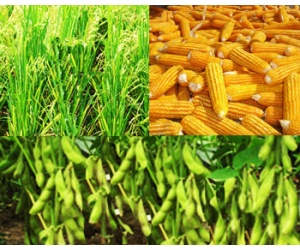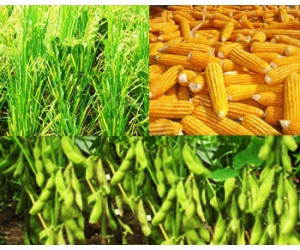[caption caption="Berbagai langkah harus dilakukan pememrintah untuk sektor pertanian"][/caption]It’s my great pleasure to present the topic, “Improving the economic profits from peatland without exacerbating the environmental impacts”. This is crucial because peatland is an important land resources which attracts he attentions of national and international communities because of its multifunctional roles. Some people unnecessarily contradicts the two functions. Our view point is that, we must optimize the two. Economic development must go hand in hand with environmental quality conservation.
In todays’ presentation I will focus this presentation on: (1) Distribution of peatland and degraded peatland, (2) Multifunctionality of peatland, (3) Emission from drained peatland, (4) Economic potential/opportunity costs of abandoned peatland, (5) The importance of inter-ministerial coherence to speed up degraded peatland rehabilitation
Recent study which are supported by field surveys indicated that the best estimate of Indonesian peat land area is about 14.9 million ha. These lands are distributed primarily on the East coast of Sumatra, especially in Riau, Jambi and South Sumatra provinces; Kalimantan, especially Central and West Kalimantan and the southern coast of Papua and West Papua.
From the 14.9 million hectares peatlands of Indonesia, about 4.4 million hectares are degraded peatlands as characterized by low carbon-stock land covers such as shrubs, grassl and ferns, bareland and ex mining areas. Besides unproductive, these lands area the sources of greenhouse gas emissions.
Peatlands have very important environment functions, among others as water storage, carbon storage and conservation of peatland-specific fauna and flora, above and below ground. Although these lands are considered as sub-optimal agronomically, but its role as agricultural land is increasingly important because of the limitations of optimal land for agricultural expansion. It’s our responsibility to keep the balance between environmental and economic roles. Winning one role and sacrificing the other is not the way to go.
The Indonesian Agency for Agricultural Land Resources Research and Development (IAARD) has just completed a project “Indonesian Climate Change Trust Fund (ICCTF) Phase II”. The objectives of the project were to: (1) Produce policy recommendations and strategies for the sustainable management of peatlands, (2) Improve human resources and institutional capacity for management and implementation of research related to GHG emissions from peatland, and (3) Strengthening national and international networks for information dissemination and exchange of research results and management of peatlands.
The project was conducted in 5 locations, namely: (1) Pelalawan (Riau) with oil palm as the indicator crop;(2) Arang-arang (Jambi) with oil palm, (3) Pulang Pisau (Central Kalimantan) with rubber, (4) Rasau Jaya (West Kalimantan) with annual crops (maize, pine apple), and (5) Mimika, Papua for observations of GHG emission and subsidence under traditional sago palm.
The project activities consisted of: (1) Mapping and developing recommendations of degraded peatland management, (2) Development of sustainable peatland management in which we evaluated crop responses, hydrology, GHG Emissions, carbon stock as well as the socio-economic conditions in the peat landscape under different treatments, (3) Capacity building, (4) Formulation of policy recommendations, and (5) Publications and networking.
Next I would like to present the main results and key messages from the project.
This table shows that in some districts, the peatland area exceeds 50% of the total land area. As a result, landholders and local governments have no choice but to utilize the peatland, although the land is classified as land sub-optimal.
Our study has demonstrated that, when properly managed, crop production on peatland is comparable to that of mineral land, but the initial investment to build the drainage network and increase soil fertility is a challenge.










